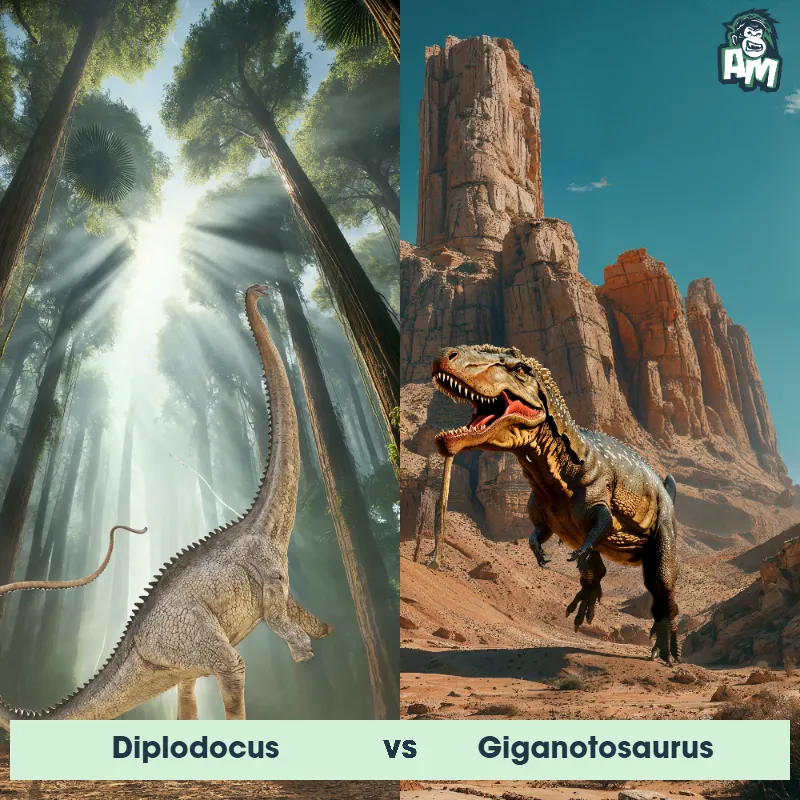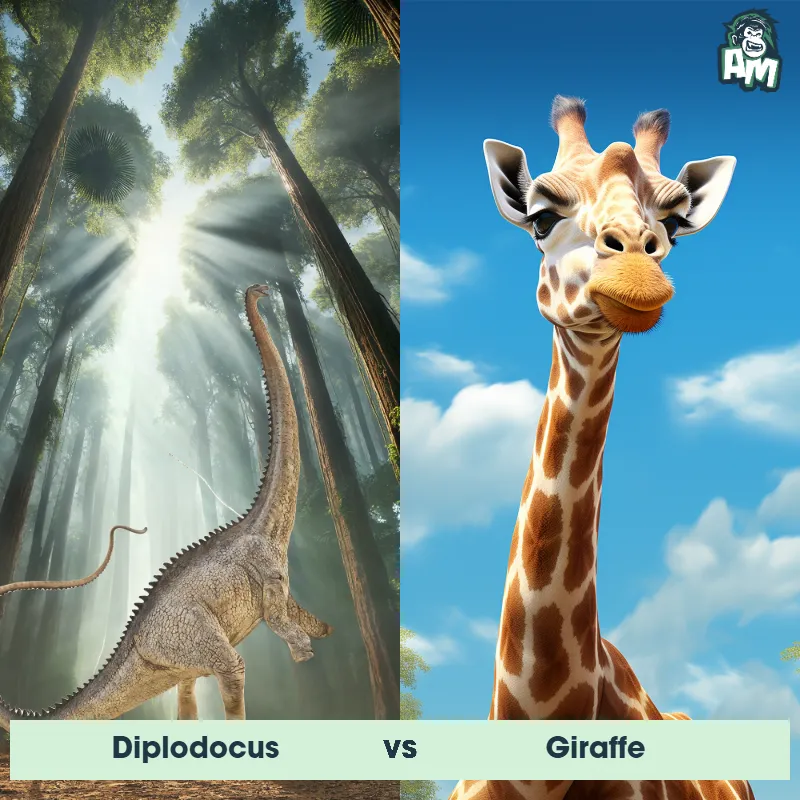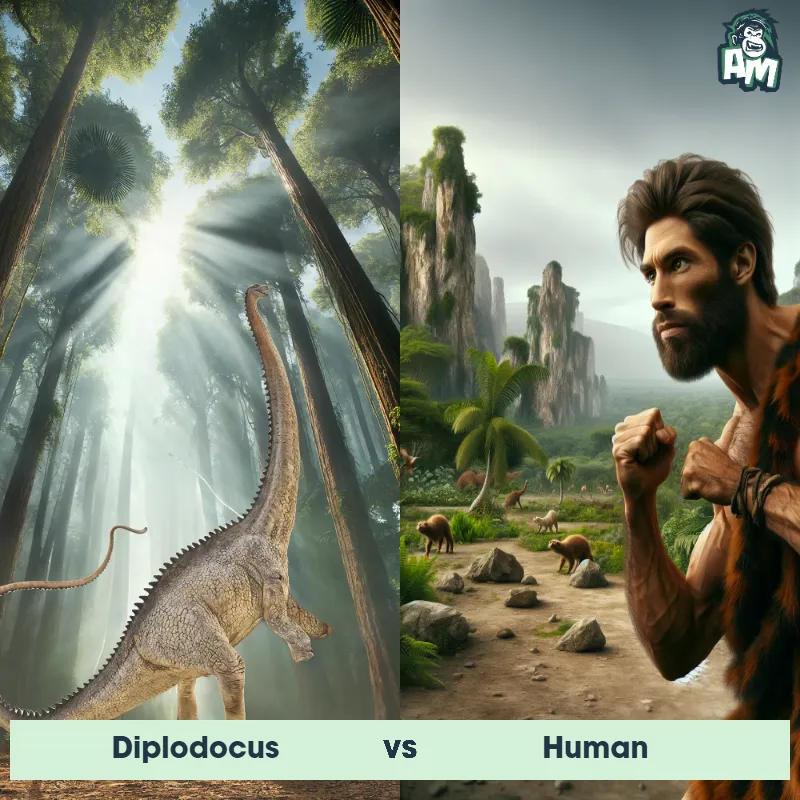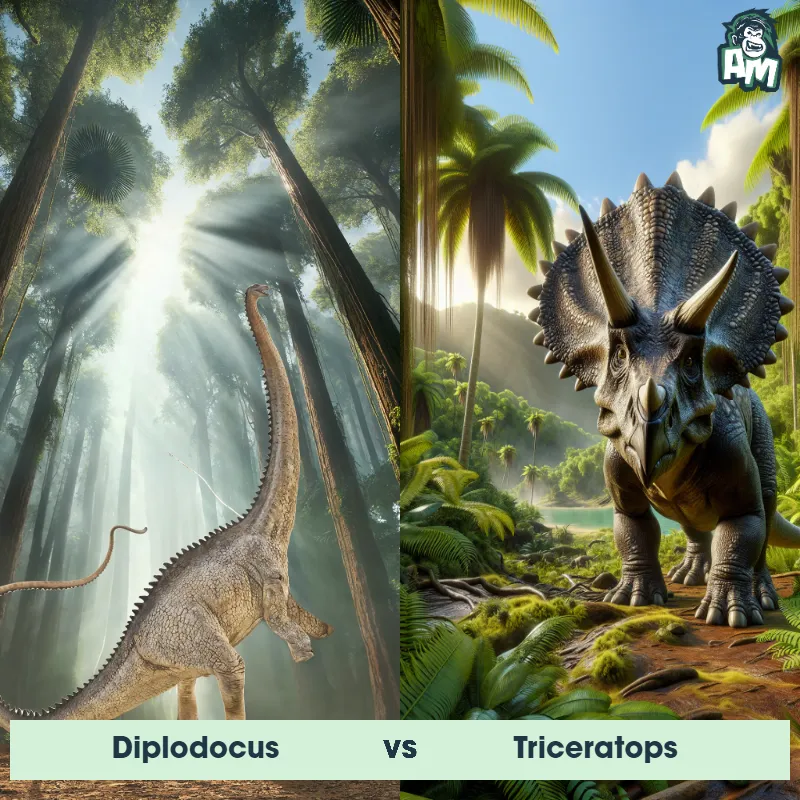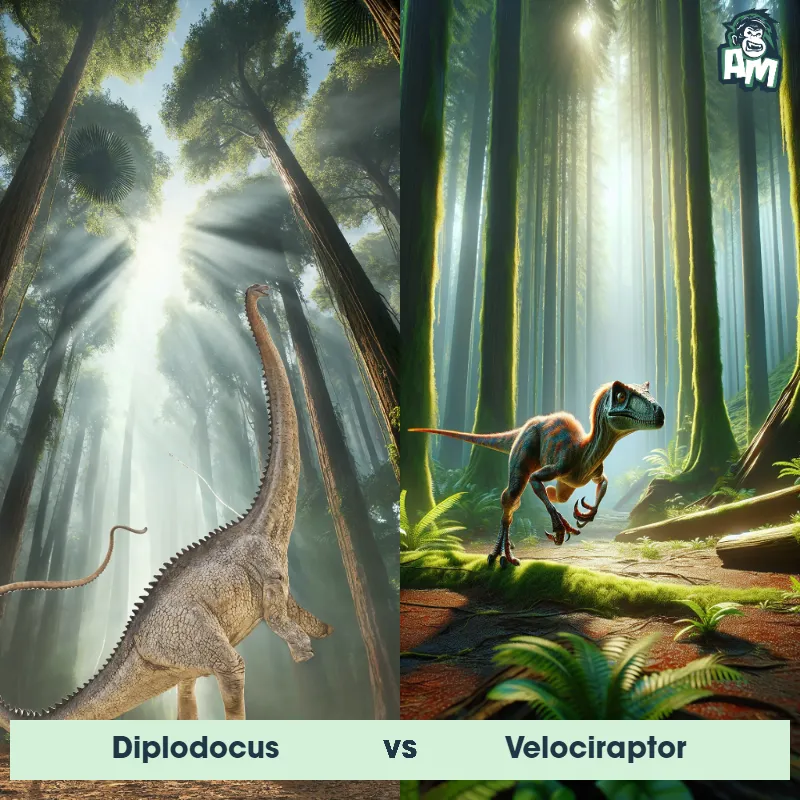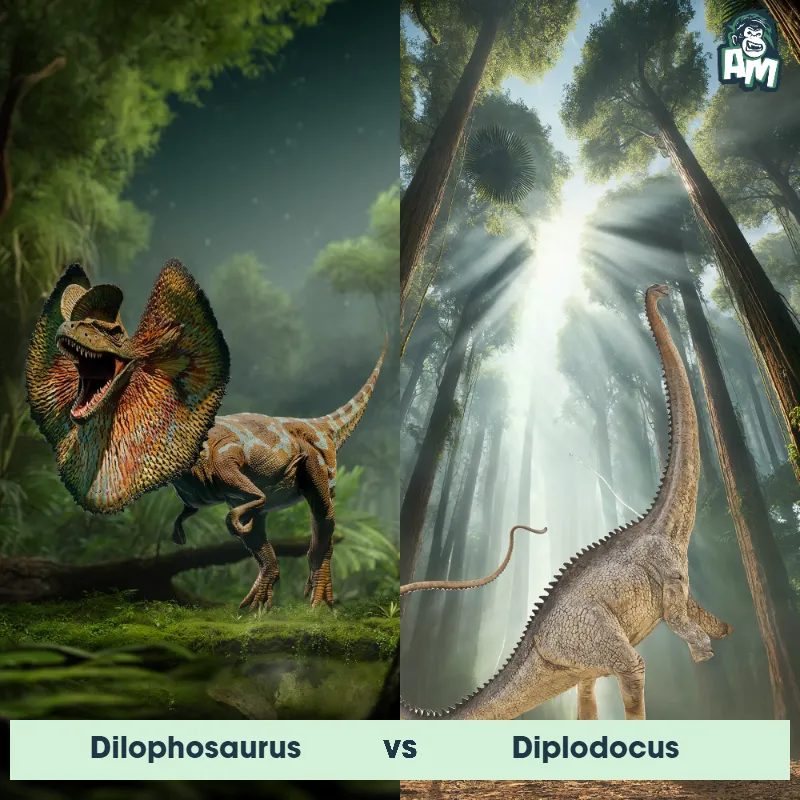The Diplodocus
The Diplodocus, also known as the giant sauropod dinosaur, lived during the Late Jurassic period and is known for its long neck and tail, small head, and massive body. This herbivorous creature had pillar-like legs and a unique row of spines along its back, making it one of the largest land animals to have ever existed.
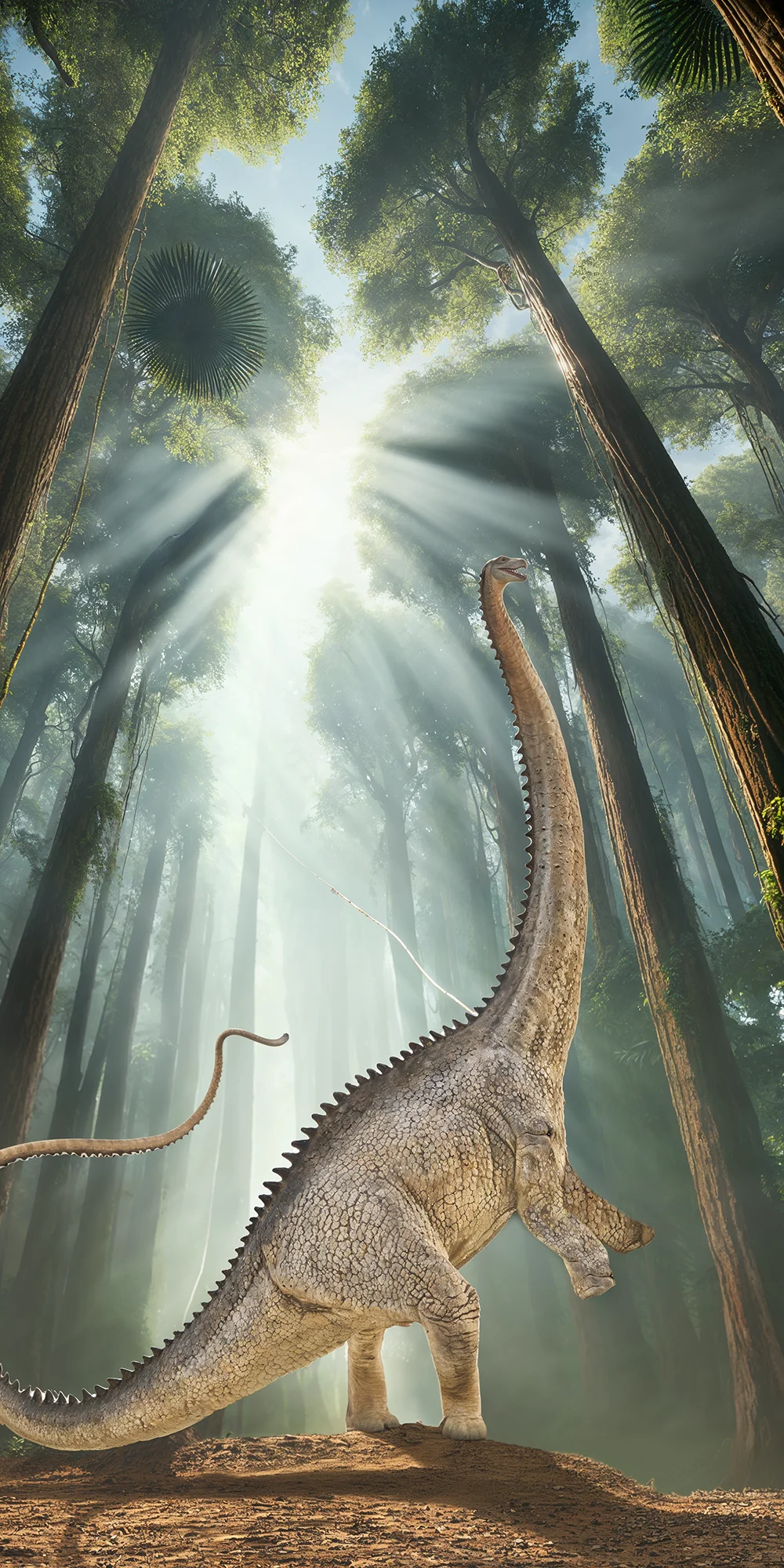
| Diplodocus | |
|---|---|
| Size | 90 feet (27.4 meters) |
| Weight | 12 tons (10,886 kilograms) |
| Speed | 10 - 15 mph (16 - 24 km/h) |
| Key Strength | Tail whip |
| Biggest Weakness | Small skull and teeth |
| Scientific Name | Diplodocus |
| Family | Diplodocidae |
| Habitat | Forests |
| Geography | North America |
| Diet | Herbivore |
| Lifespan | 70 years - 100 years |

The Diplodocus
The Diplodocus, also known as the giant sauropod dinosaur, lived during the Late Jurassic period and is known for its long neck and tail, small head, and massive body. This herbivorous creature had pillar-like legs and a unique row of spines along its back, making it one of the largest land animals to have ever existed.
Fun Fact: Diplodocus had a whip-like tail that it could crack like a bullwhip, creating a loud sound to deter predators or communicate with other Diplodocus.
| Diplodocus | |
|---|---|
| Size | 90 feet (27.4 meters) |
| Weight | 12 tons (10,886 kilograms) |
| Speed | 10 - 15 mph (16 - 24 km/h) |
| Key Strength | Tail whip |
| Biggest Weakness | Small skull and teeth |
| Scientific Name | Diplodocus |
| Family | Diplodocidae |
| Habitat | Forests |
| Geography | North America |
| Diet | Herbivore |
| Lifespan | 70 years - 100 years |
Diplodocus Matchups
We use AI to simulate matchups between the Diplodocus and other animals. Our simulation considers size, strength, and natural predatory behaviors to determine the most likely outcome.
Diplodocus: Diet, Predators, Aggression, and Defensive Behaviors
What did Diplodocus eat?
Diplodocus was an herbivorous dinosaur that primarily fed on plants, such as ferns, conifers, and other vegetation during the Late Jurassic period. They were known to have long necks that allowed them to reach high branches and leaves for their food.
Did Diplodocus have any predators?
As adults, Diplodocus did not have many predators due to their sheer size and the protection offered by their herds. However, younger Diplodocus would have been vulnerable to large theropod dinosaurs such as Allosaurus, Ceratosaurus, and Torvosaurus, which could have preyed upon them.
Were Diplodocus aggressive?
Diplodocus were not known to be aggressive dinosaurs. They were generally peaceful herbivores that likely kept to themselves and focused on feeding and caring for their young. They did not exhibit aggressive behavior towards other dinosaurs or creatures.
Did Diplodocus fight?
Diplodocus did not engage in fighting with other dinosaurs, as they were not known for their aggressive behavior. Their primary focus was on feeding and surviving in their environment. They likely used their long tails for defense rather than for fighting against other dinosaurs.
How did Diplodocus defend themselves?
Diplodocus primarily relied on their size and herding behavior for defense against potential predators. When threatened, they would likely have used their long tails to swipe at predators or scare them away. Additionally, their sheer size and ability to move in herds offered protection against predators.
What was Diplodocus' biggest weakness in a fight?
Despite their size and strength, Diplodocus' biggest weakness in a fight would likely have been their relatively slow speed and agility compared to some of their predators. This could have made them vulnerable to surprise attacks or being outmaneuvered by faster and more agile predators. Additionally, their long necks and tails could have been targeted by predators as potential weak spots in a fight.
Fun Fact: Despite their enormous size, Diplodocus are believed to have been relatively lightweight due to their hollow bones, enabling them to move with more ease on land.
Fun Fact: The name "Diplodocus" translates to "double-beam" in Greek, referring to the double-beamed chevron bones located underneath its tail.



